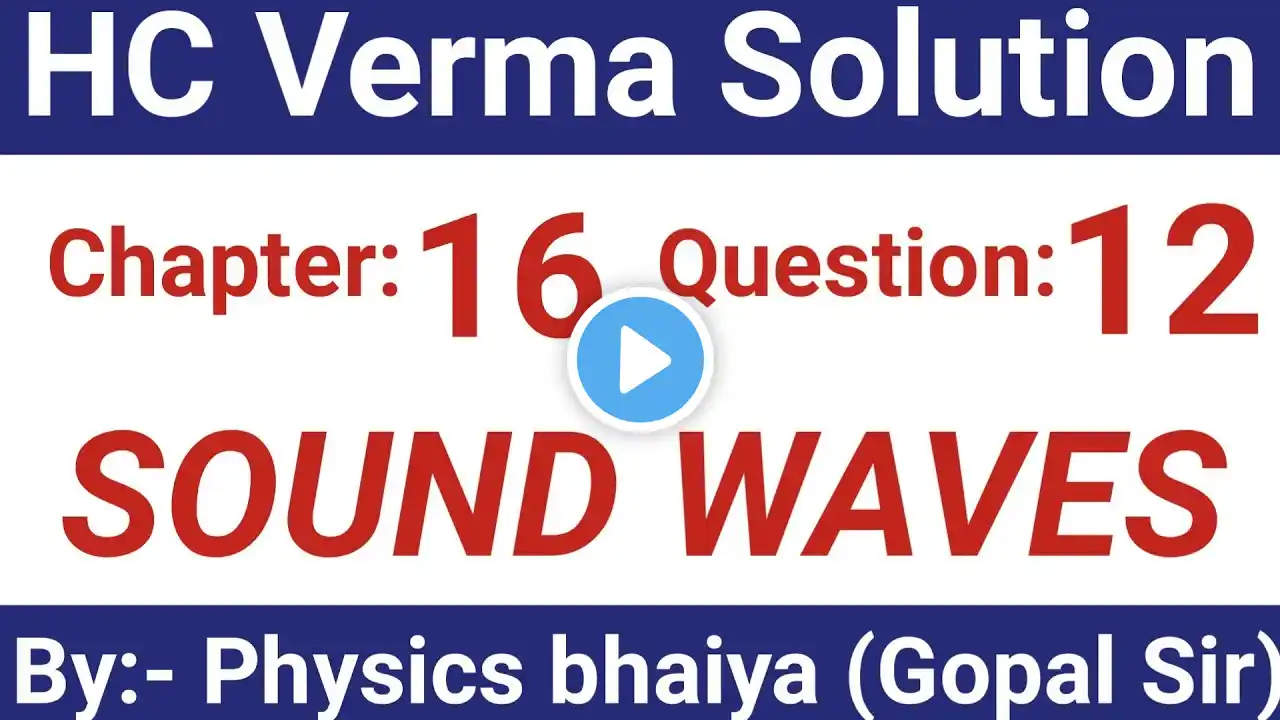
C-16 Sound Waves | HC Verma Questions for Short Answers Solution | JEE/NEET
Join my telegram channels for latest updates: https://t.me/NEET_PHYSICS https://t.me/IITJEE_PHYSICS On my telegram you'll also find the links of my FREE LIVE classes that I take everyday. Watch my free live classes on unacademy: https://unacademy.com/@physicsbyprate... Instagram handle: physicsaholics_prateek Or simply click on the link to reach my instagram account exclusively for students: https://www.instagram.com/p/B_Yl0gnBf... Visit website: https://physicsaholics.com SOUND WAVES (Pg. 351) 1. If you are walking on the moon, can you hear the sound of stones cracking behind you? Can you hear the sound of your own footsteps? 2. Can you hear your own words if you are standing in a perfect vacuum? Can you hear your friend in the same conditions? 3. A vertical rod is hit at one end. What kind of wave propagates in the rod if (a) the hit is made vertically (b) the hit is made horizontally? 4. Two loudspeakers are arranged facing each other at some distance. Will a person standing behind one of the loudspeakers clearly hear the sound of the other loudspeaker or the clarity will be seriously damaged because of the collision of the two sounds in between? 5. The voice of a person, who has inhaled helium, has a remarkable high pitch. Explain on the basis of resonant vibration of vocal cord filled with air and with helium. 6. Draw a diagram to show the standing pressure wave and standing displacement wave for the 3rd overtone mode of vibration of an open organ pipe. 7. Two tuning forks vibrate with the same amplitude but the frequency of the first is double the frequency of the second. Which fork produces more intense sound in air? 8. In discussing Doppler effect, we use the word “apparent frequency”. Does it mean that the frequency of the sound is still that of the source and it is some physiological phenomenon in the listener’s ear that gives rise to Doppler effect? Think for the observer approaching the source and the source approaching the observer.











